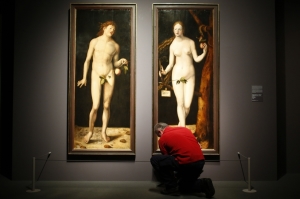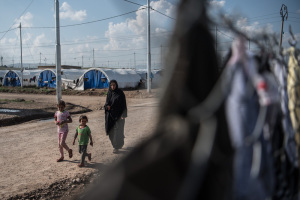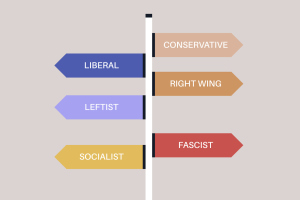Understanding a difficult saying of Jesus: 'Eat my flesh and drink my blood'

In the Gospel of John, a difficult saying emerges after a tremendous scene unfolds in the sixth chapter. Jesus miraculously feeds the 5,000 men plus their families with a small lunch taken from a young boy. The miracle left 12 baskets full of food after everyone had been filled with what Jesus provided the people.
Immediately thereafter, Jesus stuns his disciples by approaching their boat on the rough sea as they were crossing over to the other side of the Sea of Galilee. What shocked them was that Jesus approached their boat by walking on the water. They were amazed. As they welcomed Jesus into their boat — they immediately arrived at their destination.
It was at this point that crowds followed after Jesus and began to ask Him questions. Jesus took this opportunity to point them to the truth of His sustaining life giving grace which results in eternal life. It was during His teaching that he claimed to be “the bread of life” which caused them to grumble as He compared Himself to the miracle of God in the wilderness. As they grumbled among themselves, Jesus raised the intensity of the moment as He said the following:
“So Jesus said to them, ‘Truly, truly, I say to you, unless you eat the flesh of the Son of Man and drink his blood, you have no life in you. Whoever feeds on my flesh and drinks my blood has eternal life, and I will raise him up on the last day.’”1
The initial statement by Jesus was shocking enough for them as Jesus used the “I AM” language pointing back to the Exodus event, but now He speaks of eating His flesh and drinking His blood. This certainly created a firestorm of controversy among the Jews. Is Jesus encouraging cannibalism? For a Jew, the very thought of eating a person’s flesh or drinking a person’s blood was repulsive since that would be a clear violation of the Mosaic law (Lev 17:12). What did Jesus mean by his difficult statement?
The Roman Catholic doctrine of Transubstantiation
According to the Roman Catholic Church, Jesus intended for people to eat His actual flesh and drink His actual blood. This doctrine of transubstantiation by the Roman Catholic Church became one of the great controversies of church history. It was at the very heart of the protest of the protestants.
During the Reformation era, many protestants were burned in the streets publicly for refusing to embrace the doctrine of transubstantiation2. The success of the Reformation caused a great stir among the Roman Catholic Church — especially since many of their preachers, scholars, and common men were willing to go to the stake and be publicly burned for their denial of transubstantiation.
In a counter protest against the Reformers at the Council of Trent (1545 – 1563), the Roman Catholic Church made it clear that to oppose the teachings of the pope and the doctrines of Rome was to be an eternal death sentence — to be anathematized. According to the Catechism of the Catholic Church 1376:
“The Council of Trent summarizes the Catholic faith by declaring: ‘Because Christ our Redeemer said that it was truly his body that he was offering under the species of bread, it has always been the conviction of the Church of God, and this holy Council now declares again, that by the consecration of the bread and wine there takes place a change of the whole substance of the bread into the substance of the body of Christ our Lord and of the whole substance of the wine into the substance of his blood. This change the holy Catholic Church has fittingly and properly called transubstantiation.”
Regarding the sacraments, the Council of Trent reaffirmed the efficacy of the sacraments for salvation and anathematized those who denied their importance: “If anyone says that these sacraments of the New Law do not differ from the sacraments of the Old Law, except that the ceremonies are different and the external rites are different, let him be anathema” (Session 7, Canon 1).
The Council of Trent affirmed the doctrine of transubstantiation and anathematized those who reject it: “If anyone denies that in the sacrament of the most Holy Eucharist are contained truly, really and substantially the body and blood together with the soul and divinity of our Lord Jesus Christ, and therefore the whole Christ, let him be anathema” (Session 13, Canon 1).
Not only did they make it clear that their sacraments are necessary for eternal life—but to this very day those who reject the doctrine of transubstantiation is to be damned to Hell.
The real meaning of the words of Jesus
It should be clear from the context that Jesus was pointing to the fact that they must receive salvation by faith. In John 6:40, Jesus said “everyone who looks on the Son and believes in him should have eternal life, and I will raise him up on the last day.” Notice the language of faith. In a similar way, Jesus speaks of faith as he says, “This is the work of God, that you believe in him whom he has sent” (John 6:29).
It should be clear that Jesus is emphasizing faith. Later in the New Testament, Paul writes, “So faith comes from hearing, and hearing through the word of Christ” (Rom 10:17). It’s not by eating flesh and drinking blood that we are saved, but by faith alone in the finished work of Christ alone that a person receives eternal life.
Jesus did not encourage his followers to break the Mosaic law. That would have made Jesus a law breaker rather than the ultimate fulfillment of the law. Jesus said that he did not come to abolish the law, but to fulfill it (Matt 5:17). It’s crystal clear that Jesus was using symbolism as he taught the people about the manna in the wilderness and pointed to Himself as the “bread of life” (John 6:35).
Jesus was not speaking in the context of the Lord’s Supper, for that was not in view in this context. One of the foundational principles of biblical interpretation is to interpret a passage in its proper context. The context here is about receiving the benefits of Jesus’ sacrifice by receiving the one means of saving grace offered by God.
In the wilderness, the Israelites did not have a buffet of food choices spread out before them each day. They had one offering, and it was what God provided in the manna that came from heaven. In the same way, Jesus teaches that he is that single offering — the exclusive “bread of life” that must be received in full. By Jesus pointing to his flesh and blood he was pointing to the sacrifice of his body on the cross which remains to this day the sufficient sacrifice.
In John 6:51, Jesus says, “I am the living bread that came down from heaven. If anyone eats of this bread, he will live forever. And the bread that I will give for the life of the world is my flesh.” When Jesus uses the future tense, “I will give” he is pointing in the direction of his once for all and completely sufficient sacrifice as the Lamb of God (Heb 7:27; John 1:29).
The Roman Catholic Church offers up a fresh and new sacrifice of Jesus in every Mass. According to Catholic Answers, the “Eucharist” (Gr. eucharistia, thanksgiving) is the name given to the Blessed Sacrament of the Altar under its twofold aspect of sacrament and Sacrifice of the Mass. Notice their language of “sacrifice” which is critical at this point. The official doctrine of the Roman Catholic Church insists that Jesus Christ is truly present under the appearance of bread and wine and is offered up as a sacrifice.
Not only is this a clear violation of Jesus’ words, it’s a blasphemous thought that a new and fresh sacrifice is necessary. Every single time a Roman Catholic priest extends his hands out with a piece of bread during the Mass and says, “This is the body of Christ” he is lying. In the same way, the cup does not contain the blood of Jesus. No prayer of consecration by a priest could cause the elements of the Lord’s Supper to transform into the body and blood of Jesus, not even the prayer of the Pope of Rome himself. The teaching of transubstantiation by the Roman Catholic Church is all smoke and mirrors. It’s a fake sacrifice.
Jesus’ sacrifice is sufficient. It cannot and will not be repeated. It was a sufficient sacrifice and any attempt to recreate or reperform that sacrifice is not only impossible — it’s a denial of Jesus’ sufficient work on Calvary. John MacArthur said the following in a sermon titled, “Explaining the Heresy of the Catholic Mass, Part 1” on April 30, 2006:
He [Jesus] came, He offered that sacrifice, and God punctuated that one sacrifice by destroying the temple using the Romans to do it in 70 AD, by destroying the altars, thus smashing the entire sacrificial system of the Old Testament, and all the records of all the genealogies, of all those in the priestly line, thus ending, permanently, the priesthood. There are no more sacrifices. There are no more altars. And there are no more priests as a special order to offer sacrifices. It all came to an end at the sacrifice of Jesus Christ.
Originally published at G3 Ministries.
Josh Buice serves as the pastor of Pray’s Mill Baptist Church, a 180-year-old church where G3 Conferences began. Josh is the husband to Kari and father of four children: Karis, John Mark, Kalli, and Judson. He studied at the Southern Baptist Theological Seminary, where he earned his MDiv and DMin in expository preaching. He also serves as Assistant Professor of Preaching for Grace Bible Theological Seminary in Conway, Arkansas. Josh has a passion for biblical preaching, missions, church planting, and the local church. In his spare time, he enjoys reading, running, hunting, and spending time with his family.




























